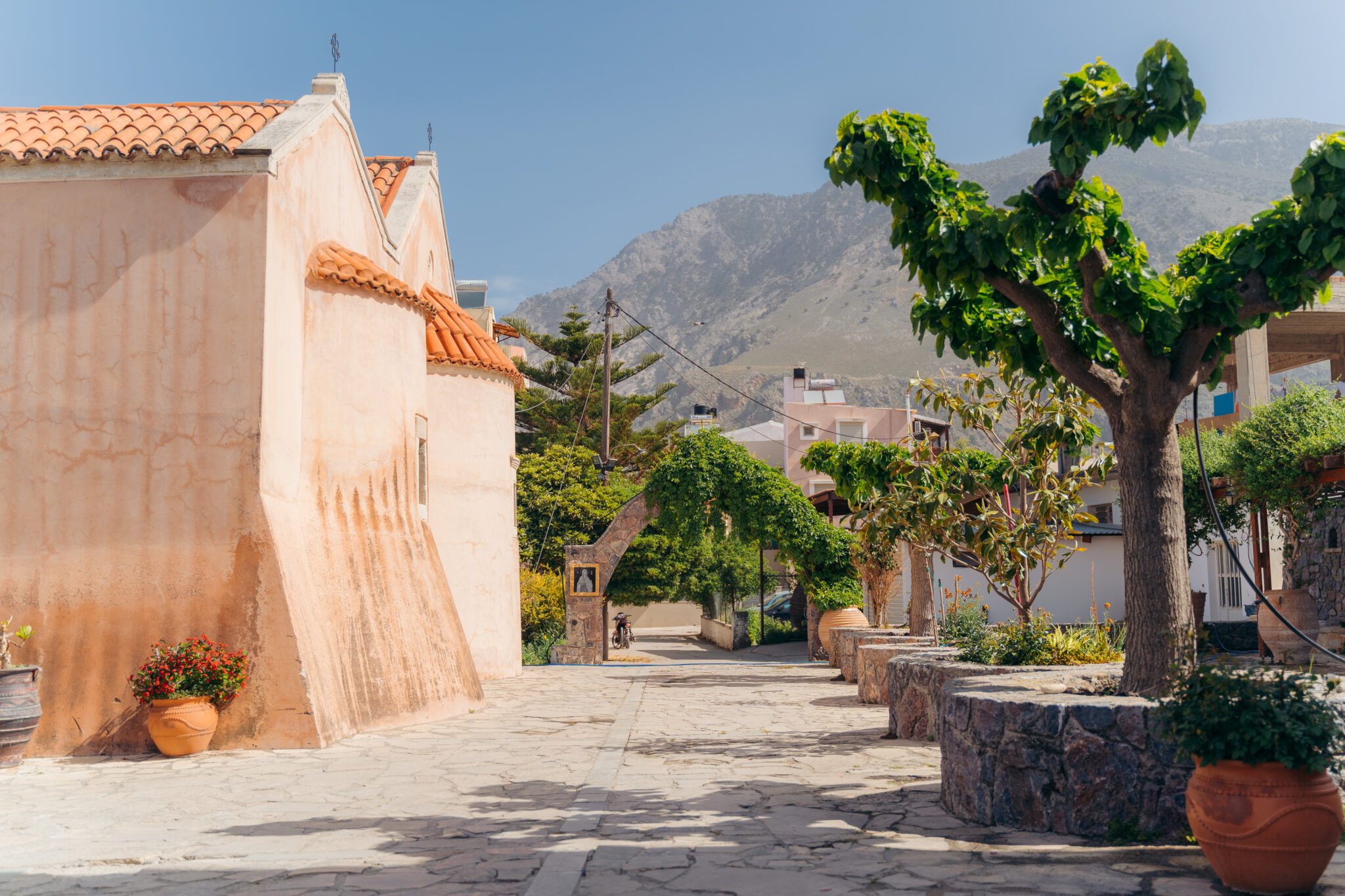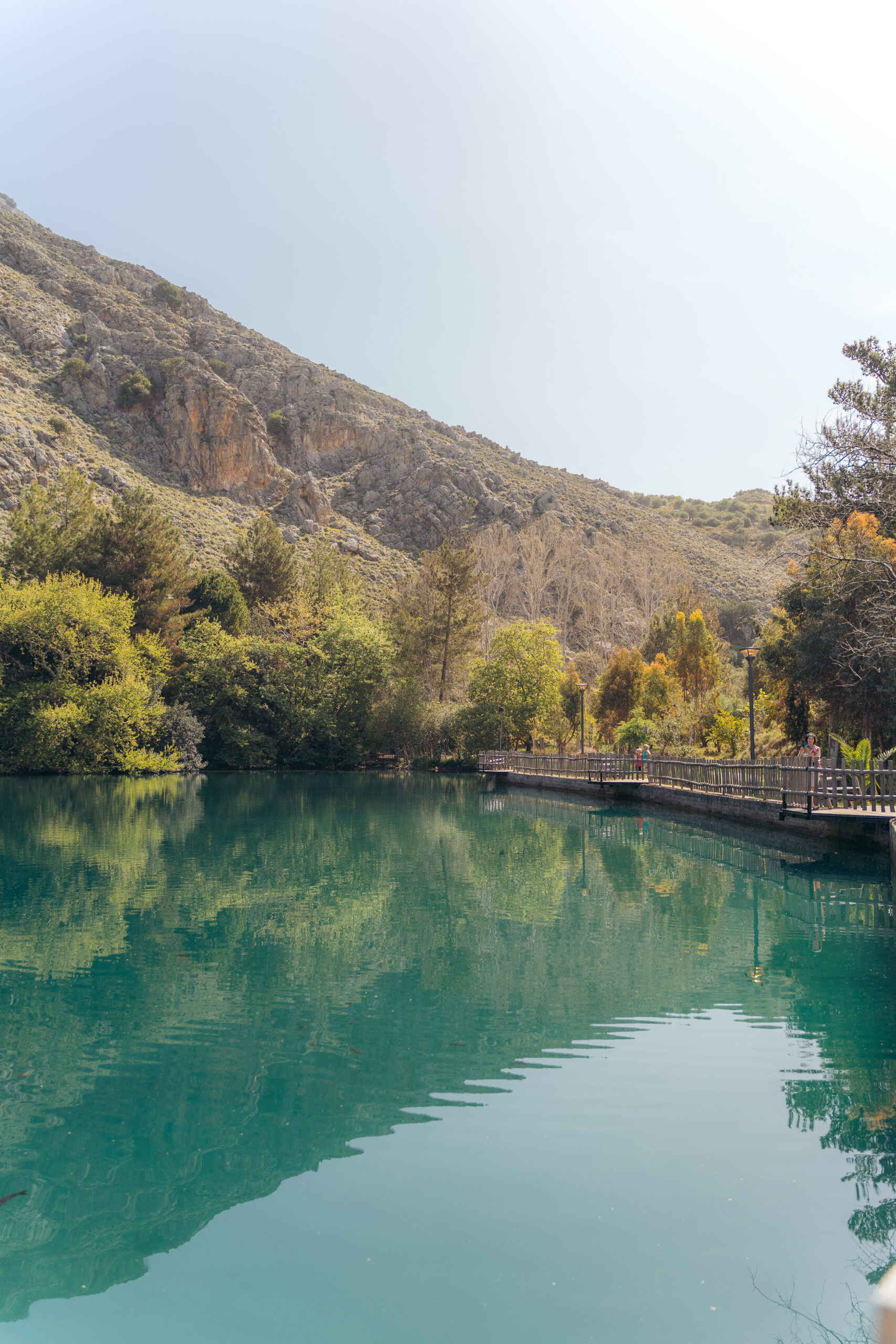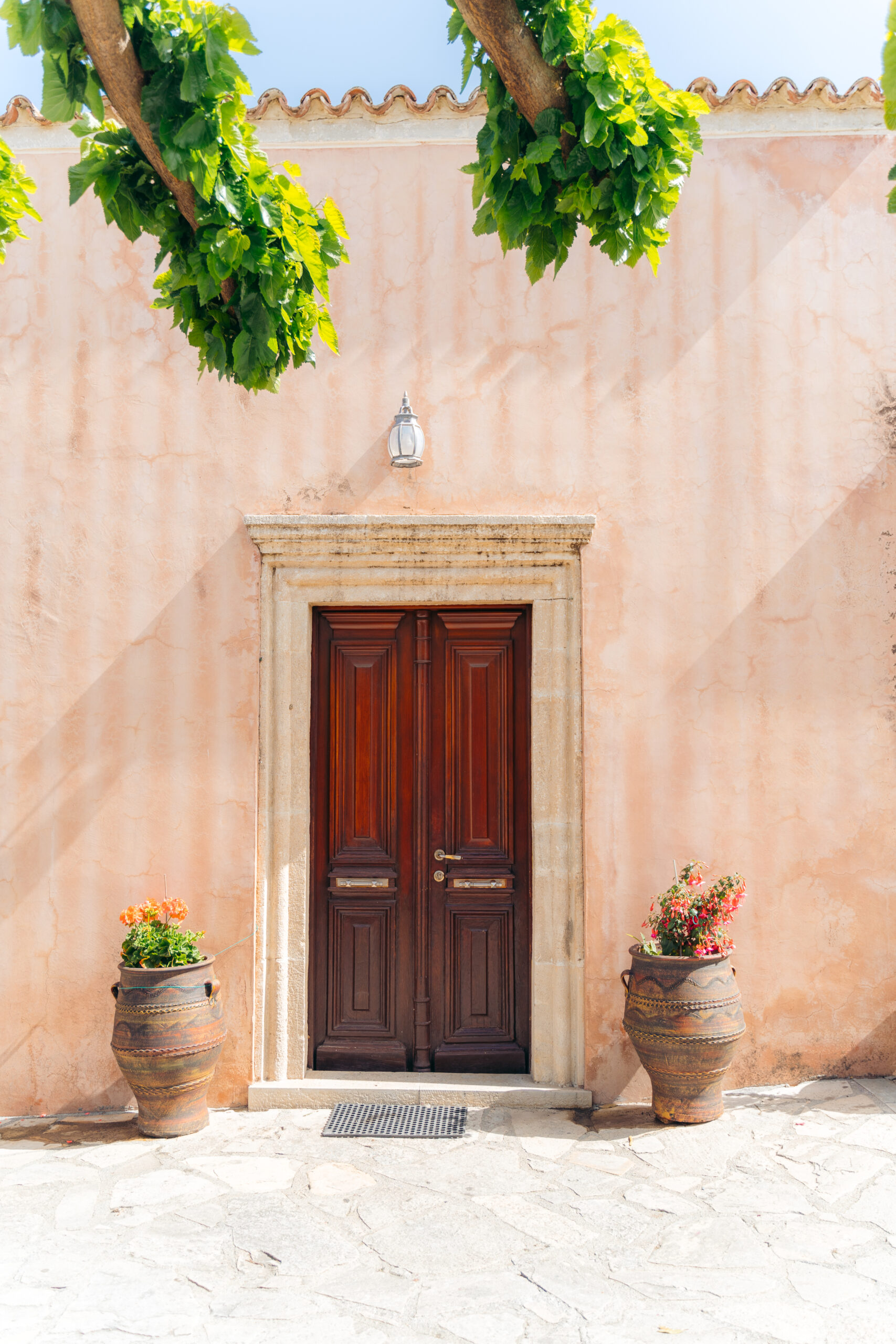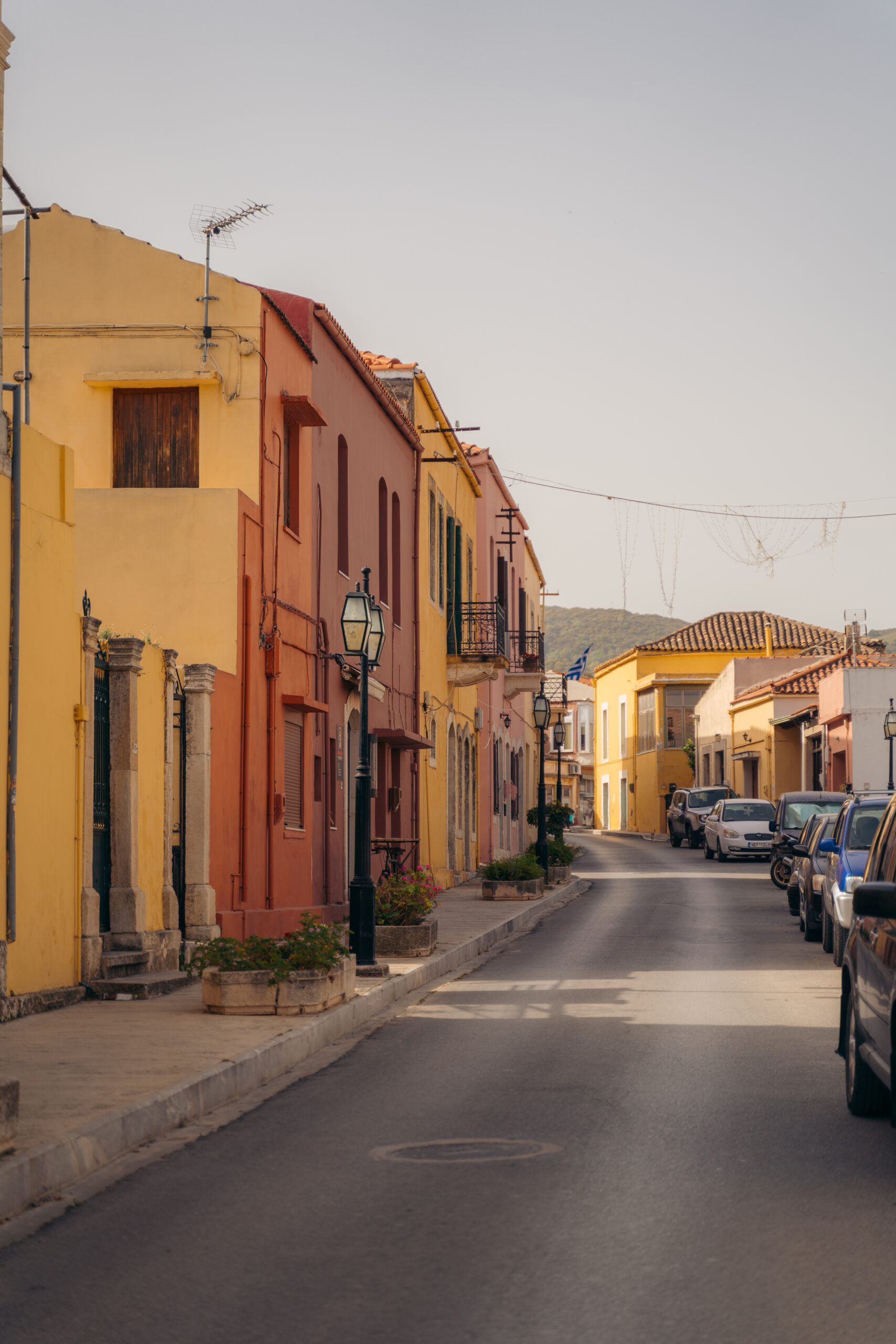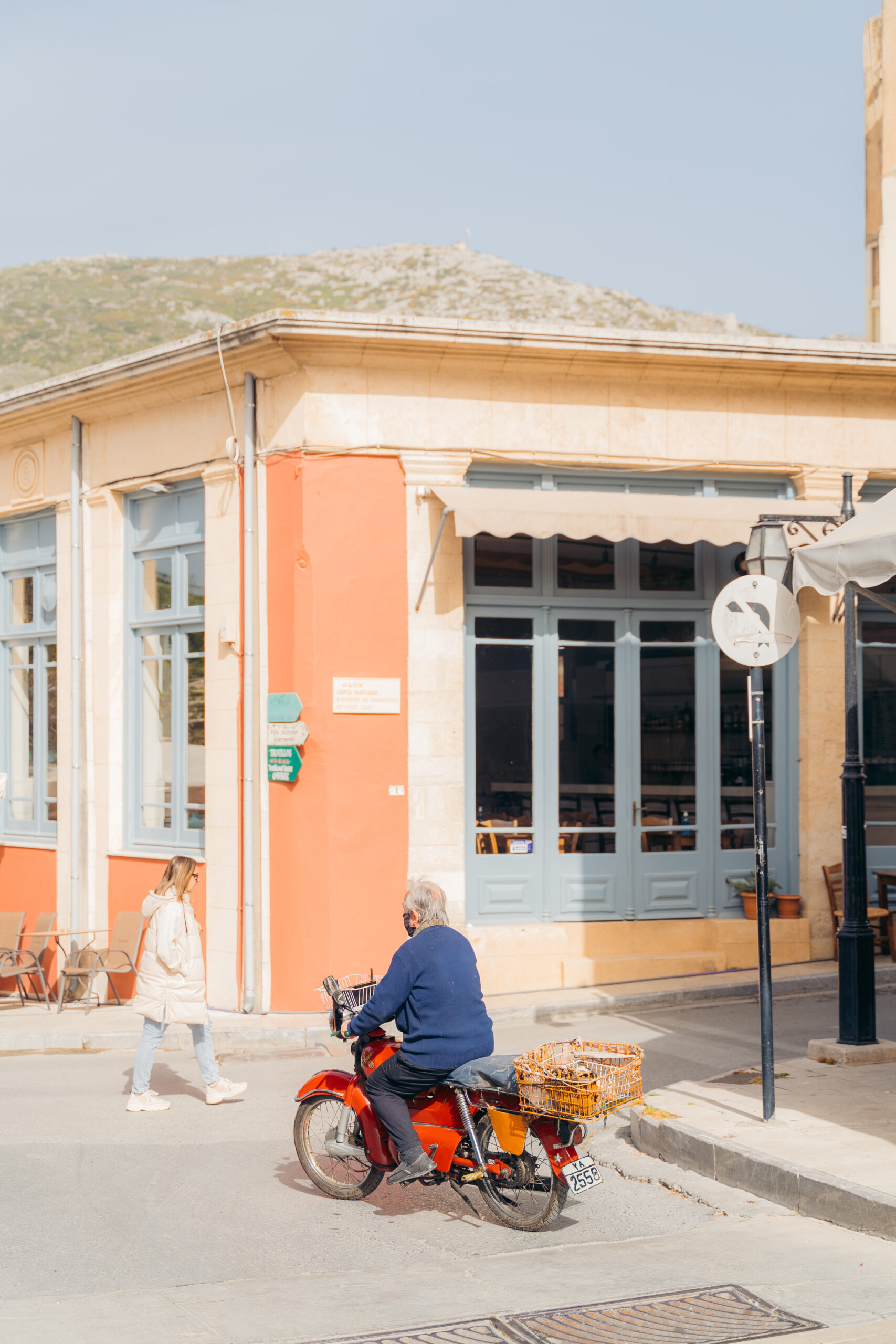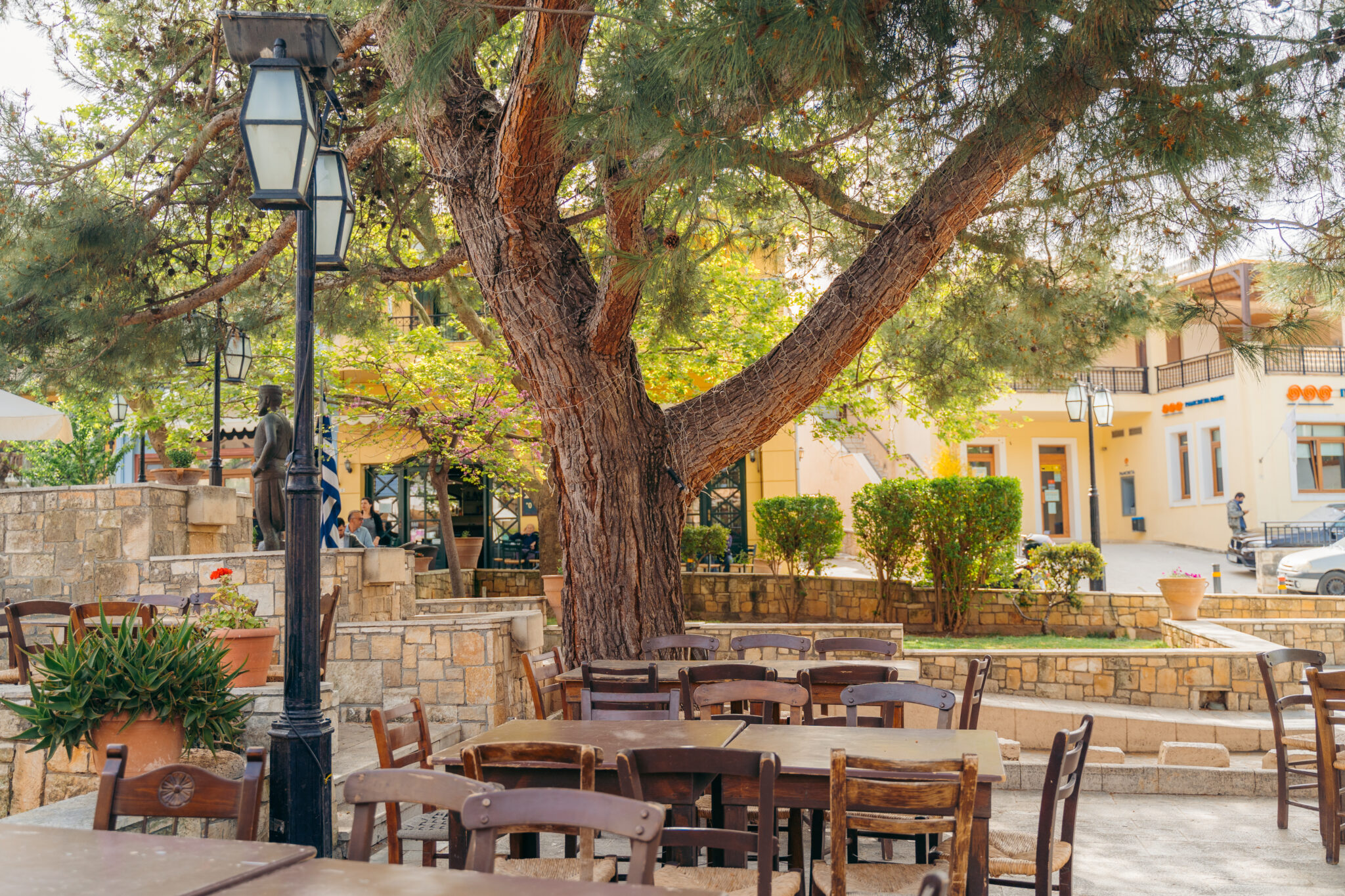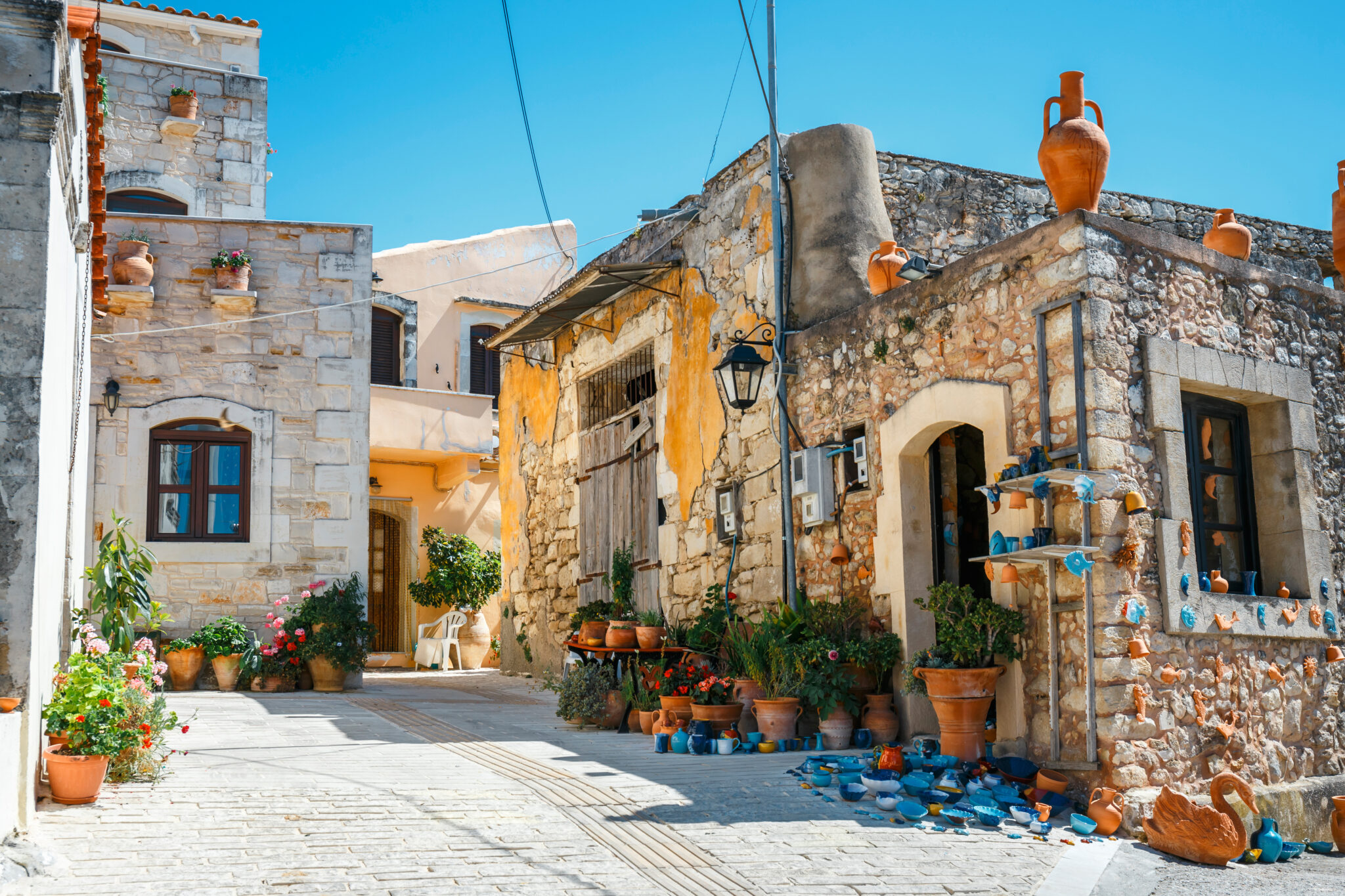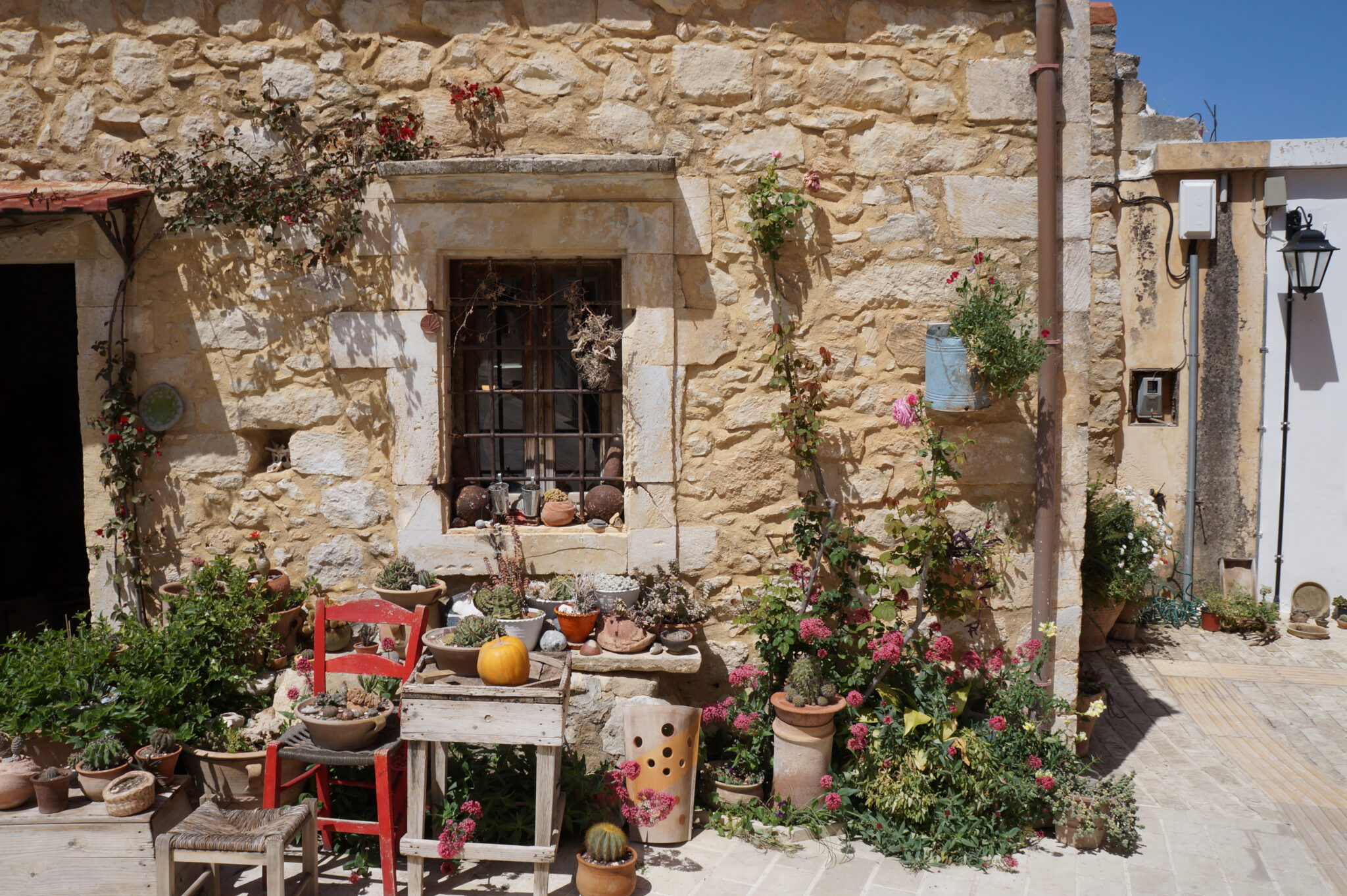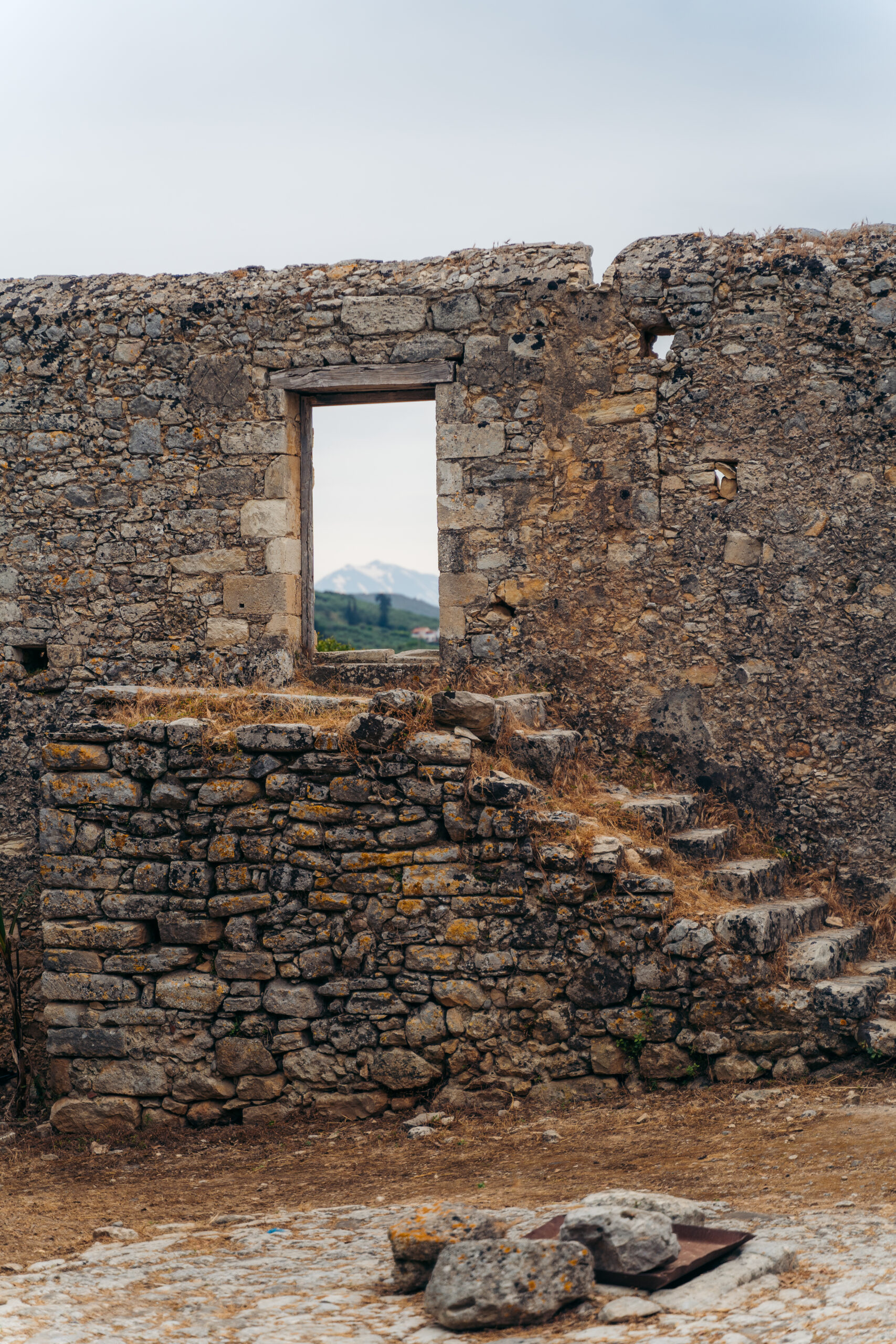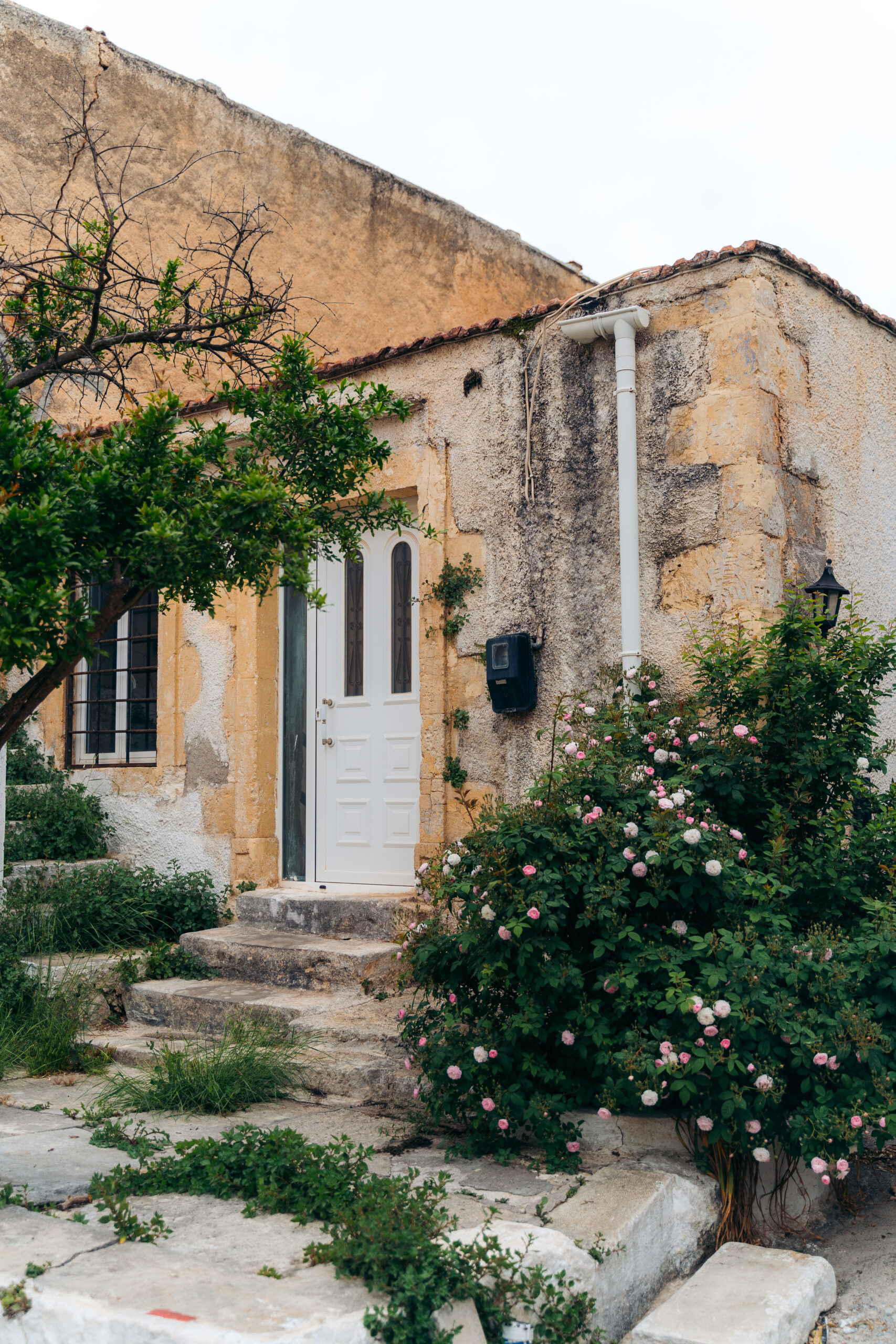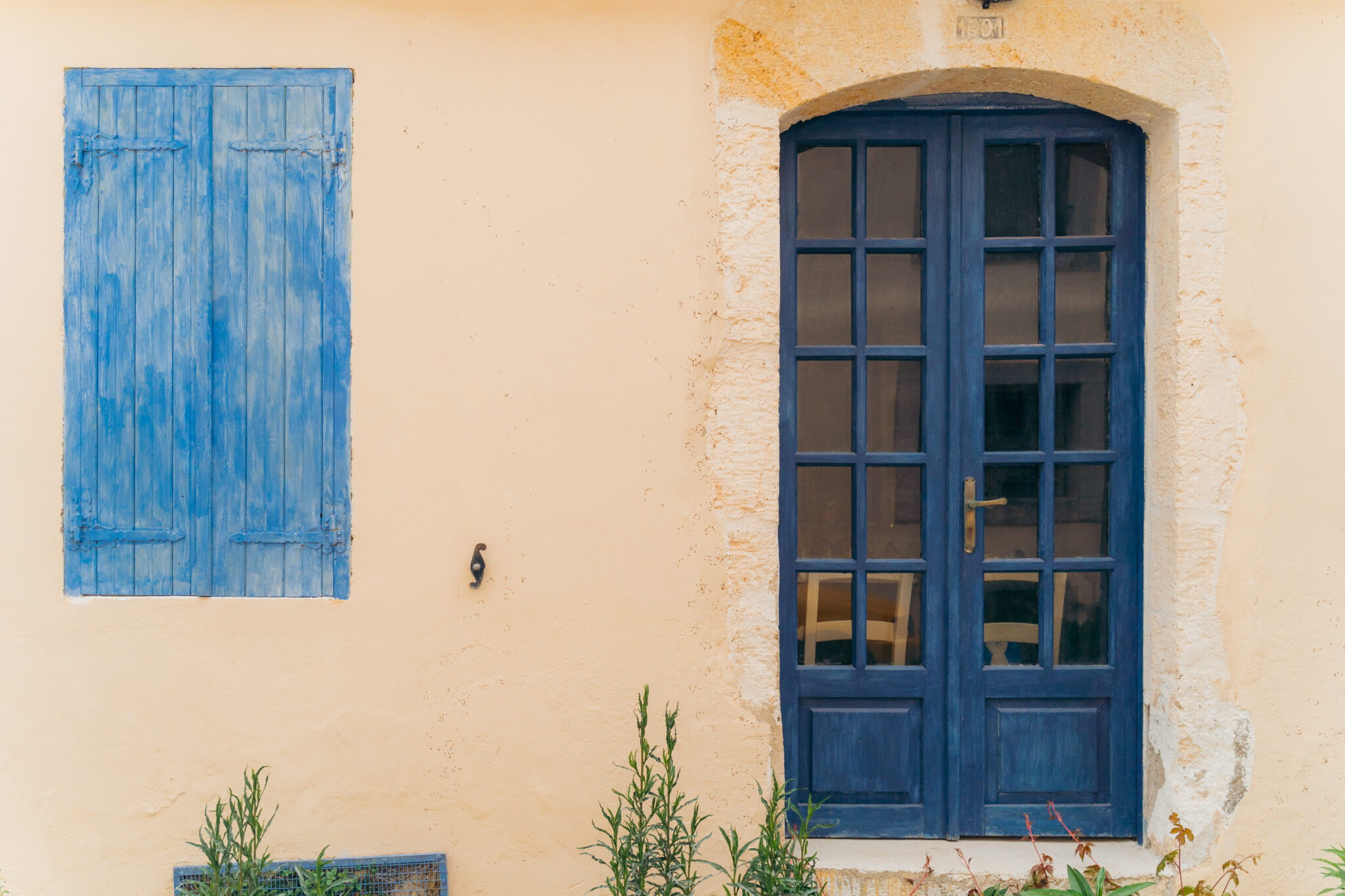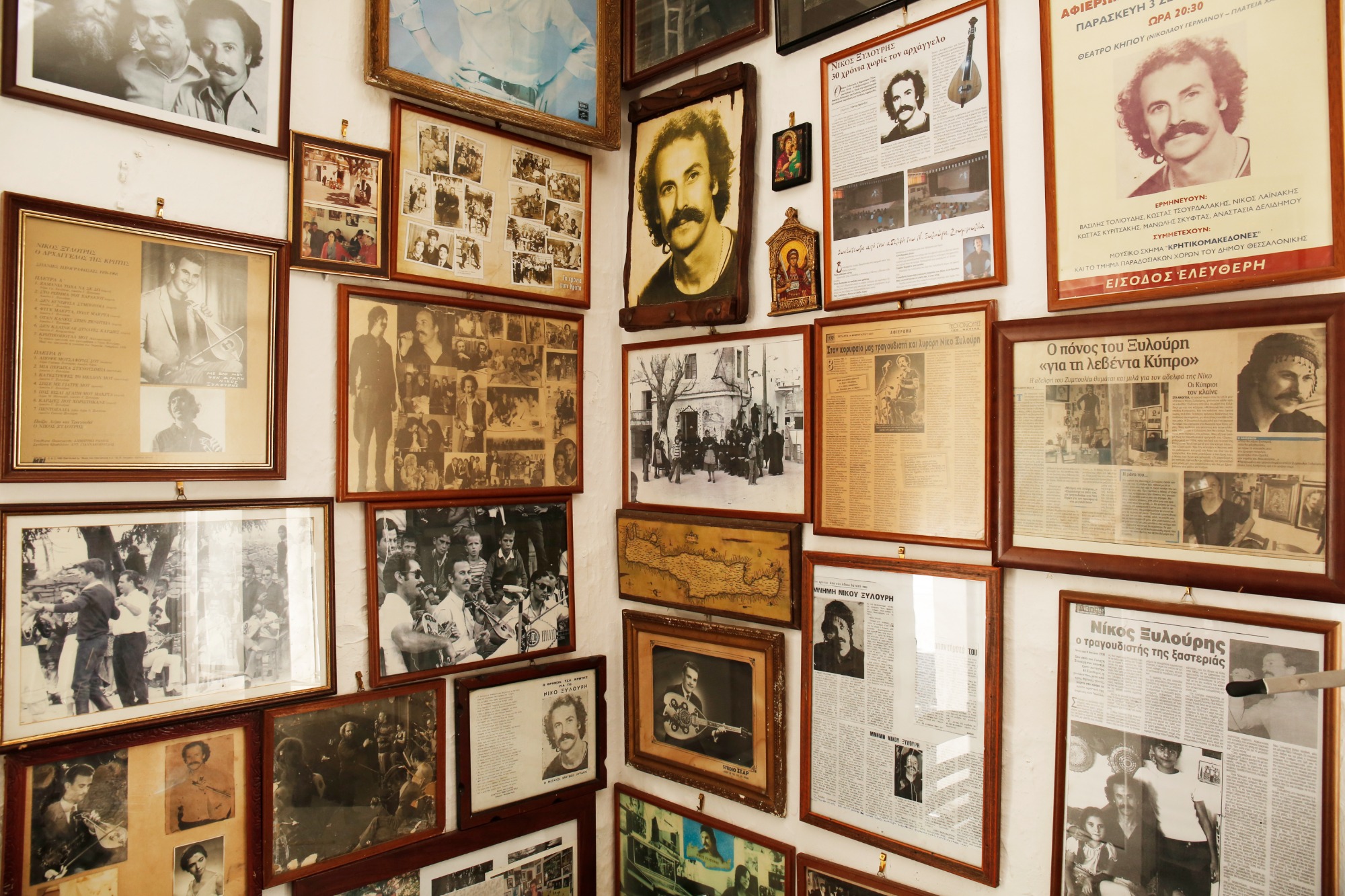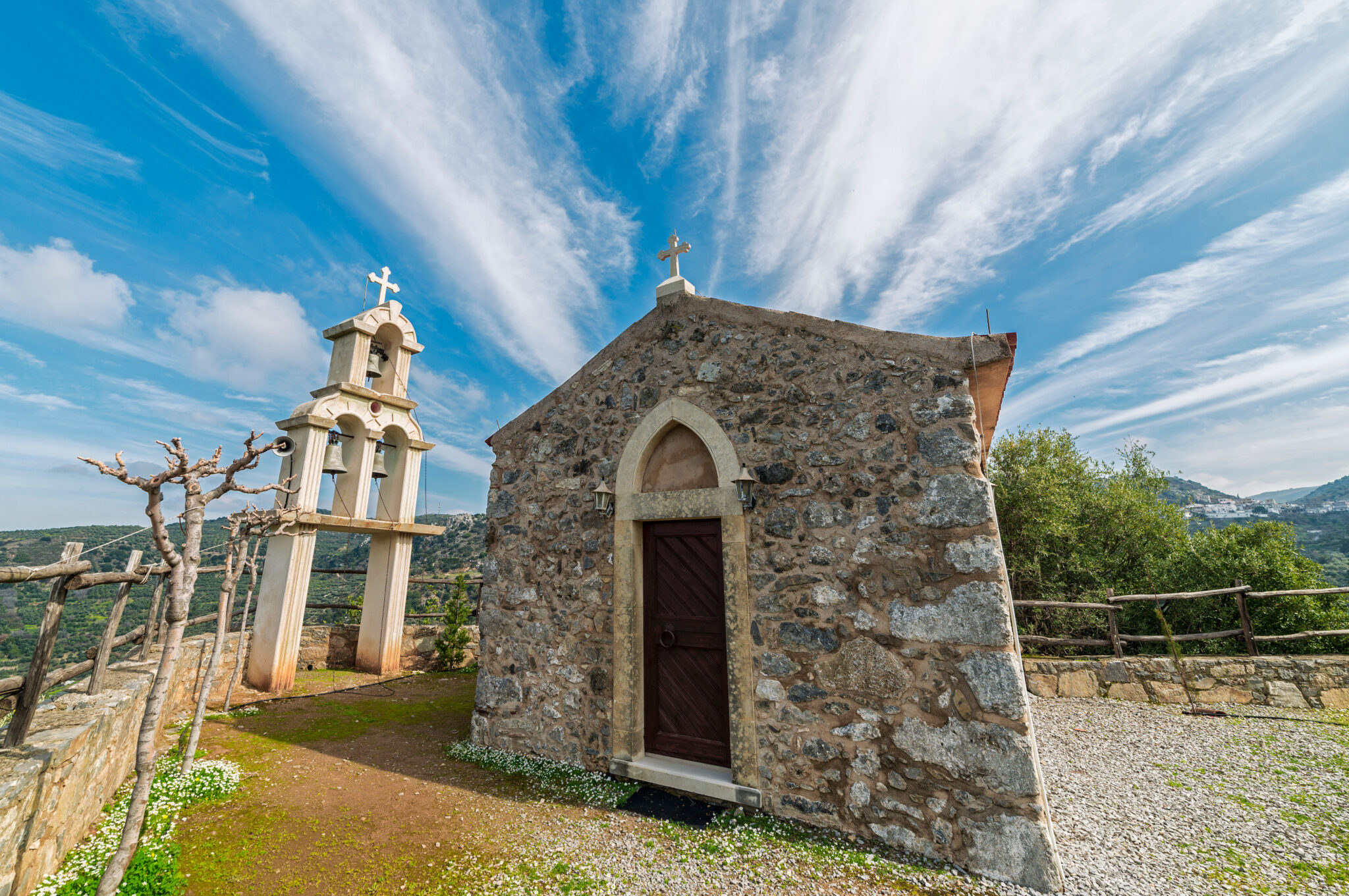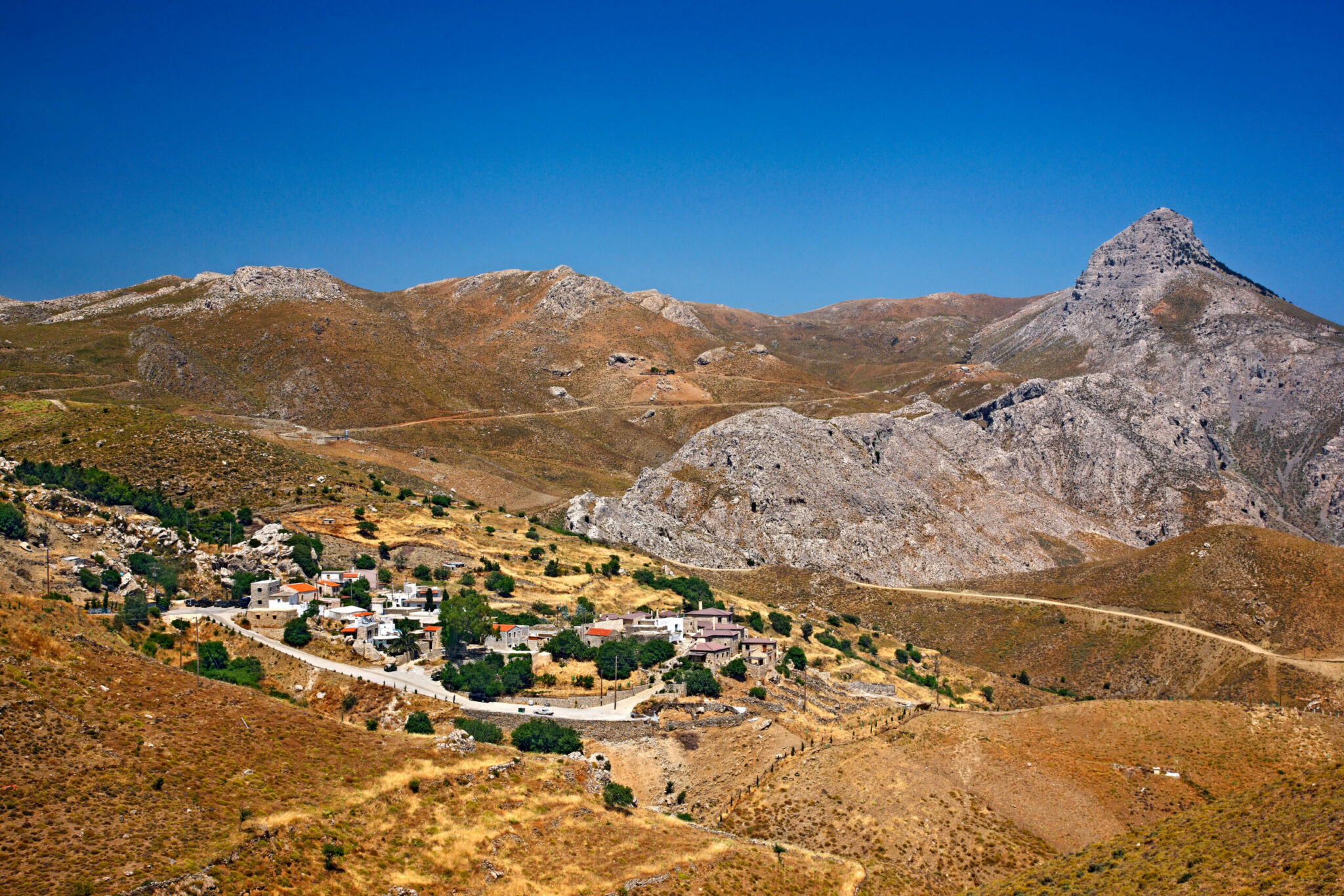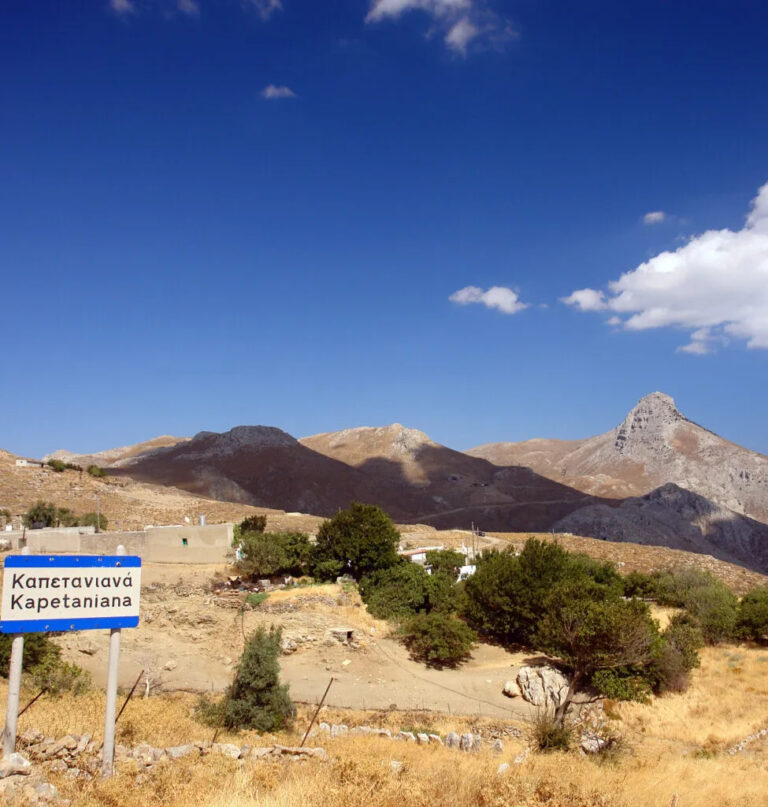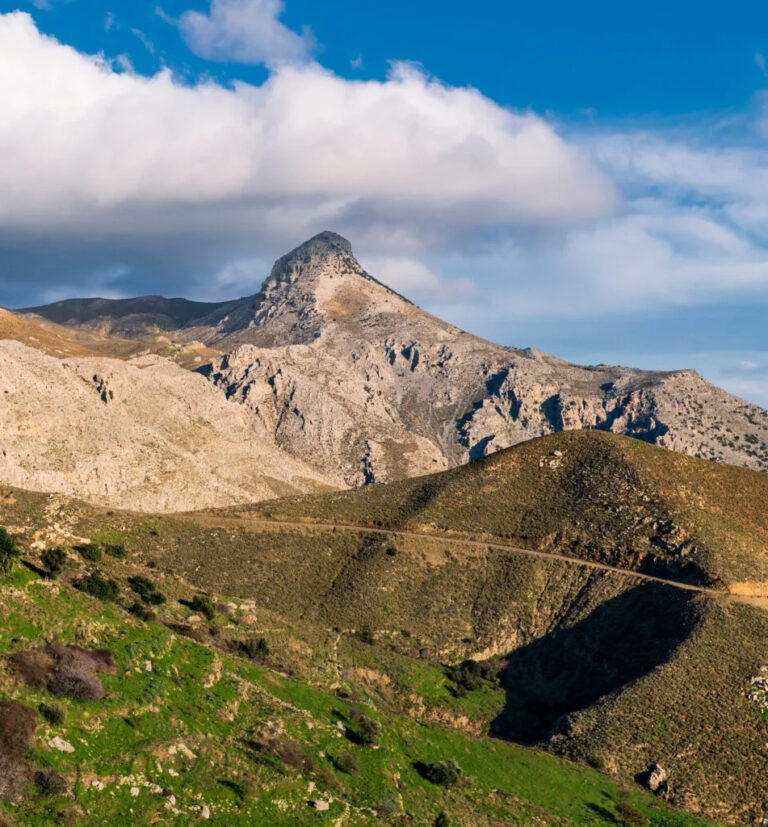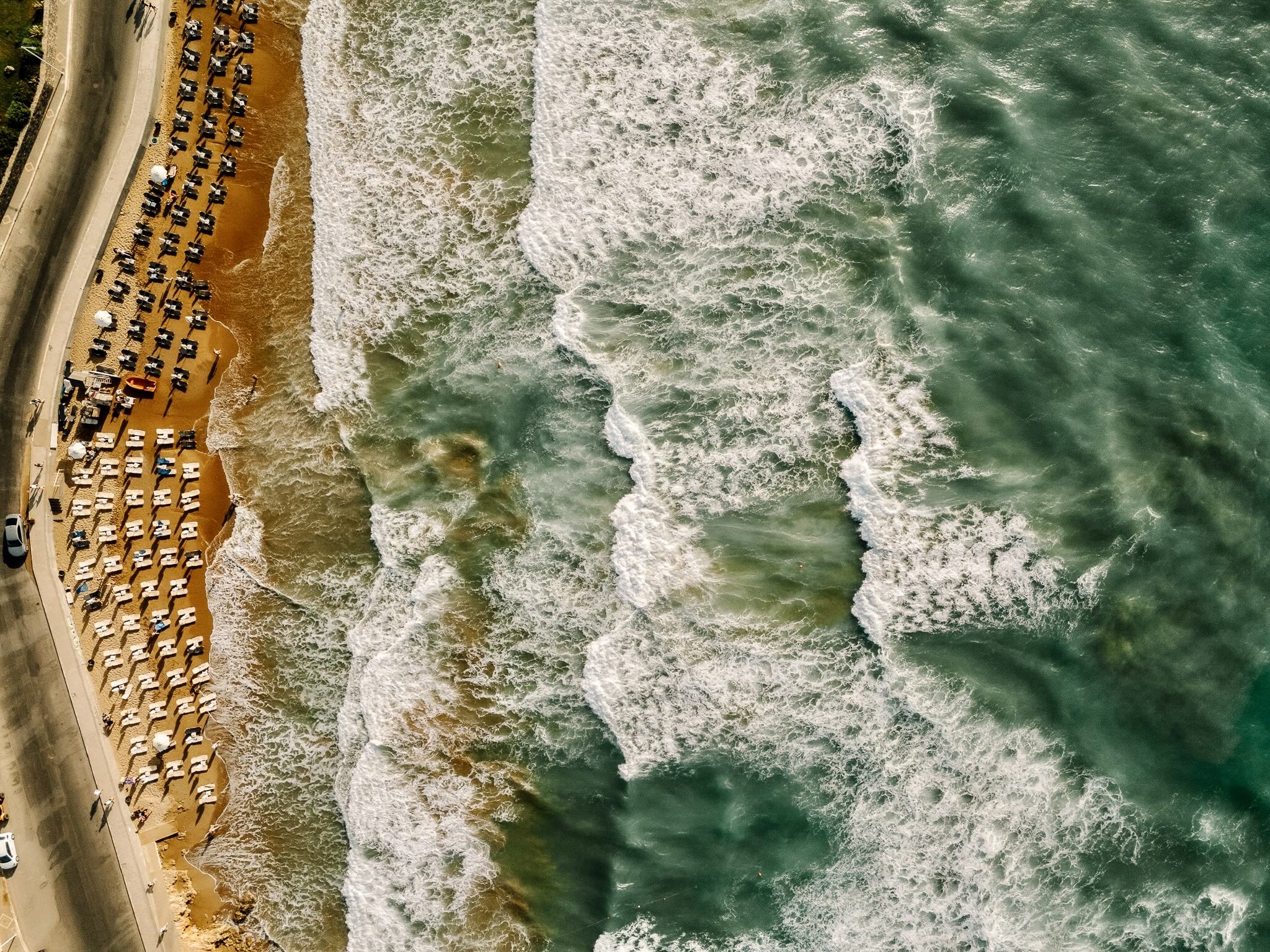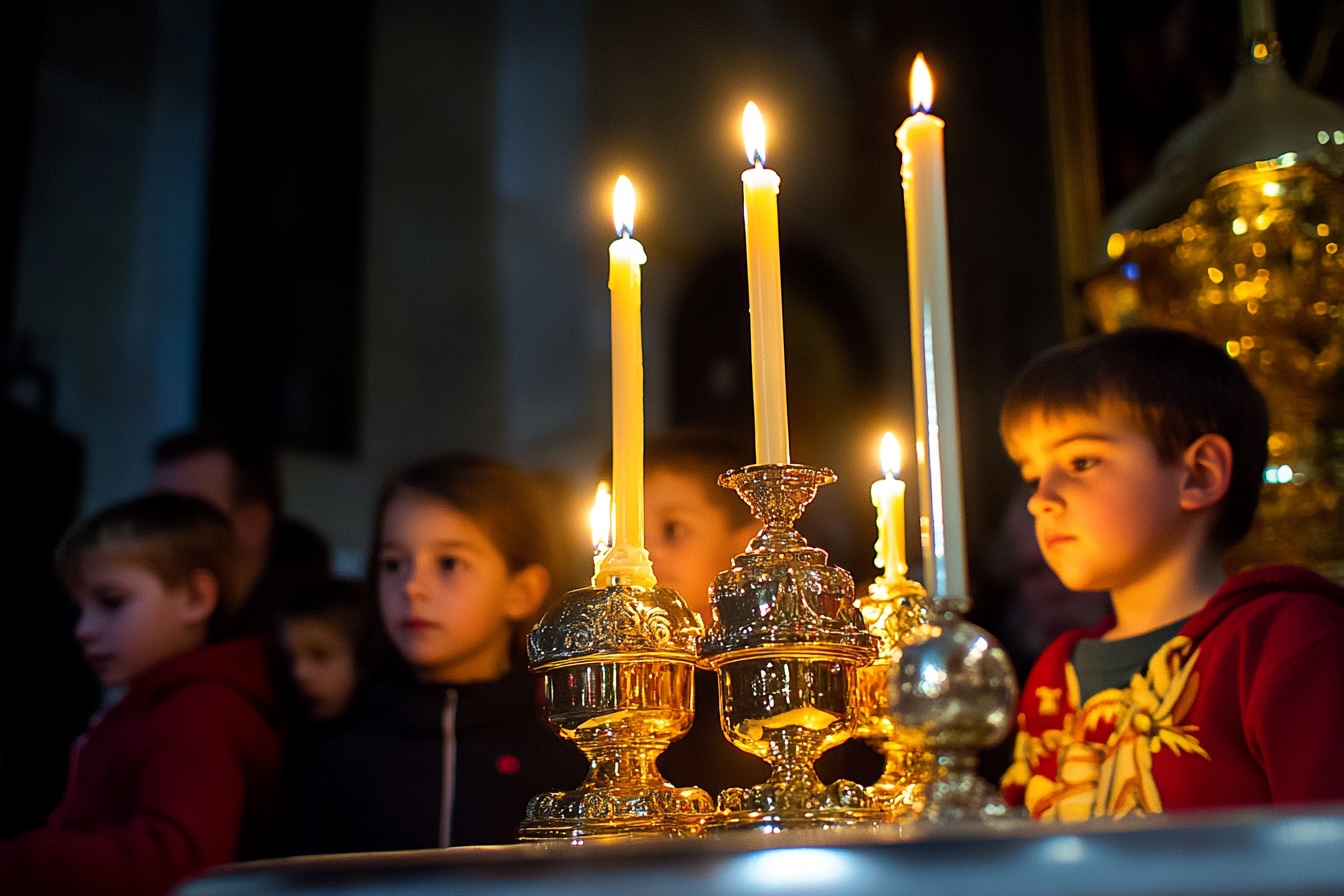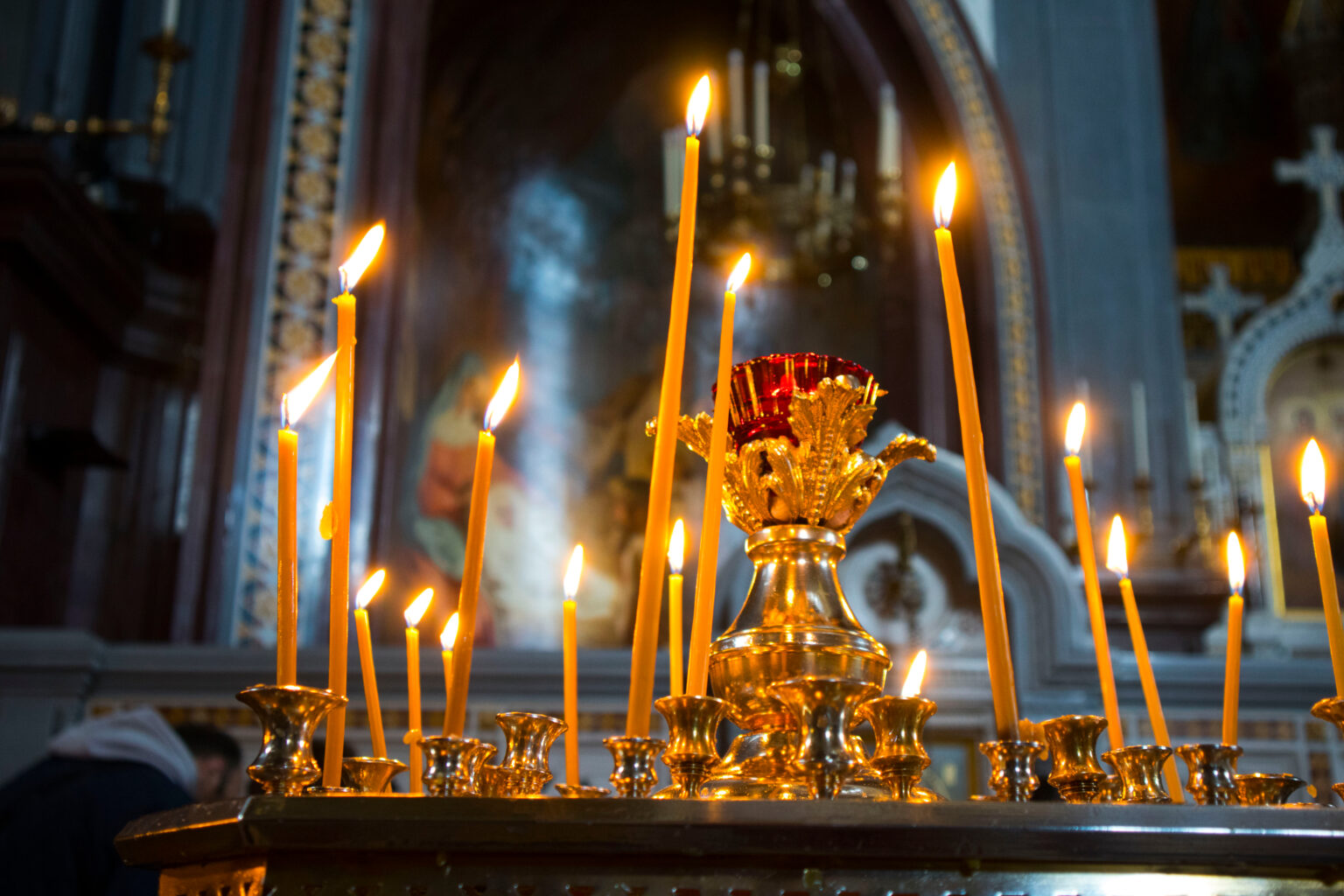Perched on the massifs of Crete, these villages offer breathtaking views of the sea and of centuries-old olive groves and well-tended vineyards. The picturesque alleys of these villages are adorned with colorful flowers, traditional cafes, Byzantine churches, and small shops. The natural beauty surrounding these villages is truly breathtaking. From lush forests, to green gorges, impressive caves and eerie mountain peaks, where the proud vultures of Crete find shelter, these unique images will stay with you for a lifetime. To truly experience the beauty of Crete, take a break from the coastal roads and head inland to these charming villages.
Zaros, Heraklion
Nestled beneath Mount Samari at an altitude of 450 meters, Zaros is a large village situated in a fertile valley with running waters. Though not particularly picturesque, it offers its own unique character. Visitors can experience the local culture by visiting the cafes and taverns, where locals gather to discuss the crops and ask for rain, all while enjoying a traditional drink such as raki. The village offers easy access to the trails, including the European path E4, that lead up to the mountain and the Forest of Rouvas, home to huge oaks and other stunning natural beauties.
One of the highlights of Zaros is the lake of Zaros or Votomos, an artificial lake surrounded by greenery and filled with trout. The village is also home to the beautiful green gorge “Rouvas”, which crosses the homonymous forest, or “Gafari” or “Agios Nikolaos” from the monastery of Agios Nikolaos, located at its exit, with small waterfalls, mini ponds, wooden bridges, impressive slopes, and beautiful nature.
For history buffs, there is a traditional watermill that functions as a museum and offers a glimpse into how flour was produced several decades ago. The Monastery of Vrontissi, a 15th century monastery located near the village at the base of the mountain, is also worth visiting and honored in the memory of St. Anthony. To the south of the village, visitors can take a walk at the artificial lake of Faneromeni which is also a beautiful spot.
Archanes, Heraklion
Located at an altitude of 400 meters, in the shadow of Mount Giouchtas, Archanes is one of the most picturesque villages of Crete. The village, boasting well-manicured houses, many with neoclassical references, is a feast for the eyes. Cobblestone streets, charming neighborhoods filled with flowers, shops, cafes and taverns in the picturesque square, natural springs, beautifully maintained churches and surrounding vineyards, all contribute to the charming image of Archanes.
The village also offers a wealth of cultural and historical attractions such as the Minoan palace in Tourkogeitonia or Ano Archanes, the Minoan necropolis in Fourni, and the archaeological site in Vathipetro, just outside the village. Visitors can also explore the Folklore and Archaeological Museum, a sculpture workshop, and the Museum of Cretan History and Tradition.
For those who enjoy outdoor activities, the surrounding area is rich with natural beauty and offers plenty of opportunities for hiking, such as the Sylamian Gorge, the E4 path, the Minoan Peak Sanctuary which offers an incredible 360-degree view, and the chapel of Lord Christ.
Margarites, Rethymno
Ensconced at an elevation of 300 meters, the quaint village of Margarites offers a unique experience for travelers. Known for its exceptional ceramics, the village boasts some of the most vibrant and colorful houses and alleys, adorned with an abundance of flowers. As one of the largest pottery centers in the country, Margarites is a true haven for those who appreciate the art of ceramics.
Take a stroll through the village and discover the remnants of Venetian architecture still present in its charming neighborhoods. Be sure to make a stop at the 16th century Monastery of Sotiros, where you can admire the serene courtyard, and Agios Ioannis Theologos, where the remains of those from the Arkadi monastery are buried.
As you wander through the main road, you’ll find an array of shops selling a variety of ceramics, as well as taverns with shaded courtyards tucked away behind lush foliage of mulberry trees. On the outskirts of the village, you can also explore the ancient site of Eleftherna, one of the most important archaeological sites on the island, featuring Roman baths, residences, and more.
Vamos, Chania
Vamos, a picturesque village sits in the heart of beautiful olive groves, is a must-see destination in Crete. Situated at an altitude of 300 meters, this semi-mountainous village has a rich history, having been first inhabited by Arabs in the 8th century and later by Venetians during their conquest of the island. The village boasts traditional architecture, with impressive buildings that are a testament to its status as the former capital of Sfakia. Visitors will find charming old mansions and stone houses with blooming courtyards adorned with bougainvilleas, arbors, and colorful geraniums on every cobblestone street.
One of the most captivating areas of the village is the old neighborhood, which offers a glimpse into the village’s glamorous past. Notable landmarks include the 13th-century Chapel of the Virgin Mary and the Monastery of Agios Georgios in Karydi, located just 3km south of the village. Also worth visiting is the old olive press from 1860, featuring 12 grand arches, and the Church of the Assumption of Theotokos, with frescoes dating back to the 11th to 14th century.
Anogia, Rethymno
Perched at an altitude of 750 meters on the slopes of Psiloritis, Anogia is one of the most renowned mountain villages of Crete. Known for being the birthplace of famous musician Nikos Xylouris, Psarantonis, and Vasilis Skoulas, for its revolutionary history, and for preserving the traditional Cretan culture. The heartbeat of the village can be found in the old neighborhoods, where whitewashed houses are surrounded by an abundance of vibrant flowers such as jasmine, vines, arbutus, and geraniums. The center of village life is the square, specifically Livadi square, where the village church stands alongside the house where Xylouris (a famous folk musician) lived, which is now a museum open to visitors. The square is also home to traditional cafes and taverns with spit-roasted meats and local delicacies.
As you walk uphill before the square, you’ll find shops selling colorful textiles, woolen kilims and patanias, an art form still practiced in Anogia. Outside the village, the area offers plenty of natural and historical attractions such as the Ideon Andron cave, where Zeus was believed to have been born, the Minoan settlement of Zominthos, which flourished between 1900-1400 BC, the stone chapel of Agia Marina with an old spring, the Observatory of Skoinakas with stunning views, the stone round chapel of Agios Yakinthos and the Nida plateau with mitata, the stone round buildings used by shepherds for housing and cheese making.
Axos, Rethymno
Sitting at an altitude of 500 meters on the northeastern side of Psiloritis, the small village of Axos is located near the ancient Doric city of Oaxos, from which some ruins such as the acropolis, the temple of Aphrodite, vaulted tombs, and a few parts of the walls are still preserved. This village is known for its traditional character, and is definitely worth a visit. The old white houses may not have gardens and courtyards, but they have pots filled with a variety of flowers adorning their doors, adding vitality and color to its small alleys.
At the foot of the village, the valley stretches towards the Talaia mountains and is filled with olive groves, orchards, and vineyards, among them cherry, walnut, carob, oak and plane trees, and many more trees and plants that thrive with the water from the river that flows down from the rocks of Psiloritis. Among the village’s sights, the Woodcarving Museum offers visitors a chance to view over 100 wooden works of art. Visitors can also explore the village’s churches such as Agia Irini and Agios Ioannis of 14th century, the ruins of Agia Paraskevi of the 12th century, and the Holy Cross of the 16th century.
Kapetaniana, Heraklion
Resting on the slopes of Asterousia, at an altitude of 750 meters in the south of Crete, the small village of Kapetaniana offers a stunning view of the Libyan Sea and a rich history dating back many centuries. The village is home to some of the oldest relics of the Cretan Minoan civilization and an important place of worship, the peak sanctuary of Kofinas, which flourished between 1700-1600 BC. As you stroll through the charming alleys of Kapetaniana, you’ll find a mix of traditional white-washed houses made of lime and more modern stone buildings, creating an interesting and picturesque landscape. For those who enjoy hiking, the village offers many paths leading to small peaks, caves and beautiful chapels such as the Chapel of Archangel Michael.
Houdetsi, Heraklion
Houdetsi, located south of Archanes, is a small village situated at an altitude of 440 meters. This classic village boasts tall eucalyptus trees, plane trees, mulberry and pine trees, whitewashed houses, flowery alleys, springs and traditional cafes. If you’re passing through the village, take some time to enjoy a traditional drink such as tsikoudia with the locals and experience the authentic heart of Crete. For almost two decades, the village has been home to Irish musician Ross Daly’s musical workshop, where he holds seminars on musical instruments for children and adults alike. The verdant gorge of Spiliotissa, located next to the village, is a perfect spot for hiking and leads to the small chapel of Agia Kyriaki and the Holy Monastery of Spiliotissa.



